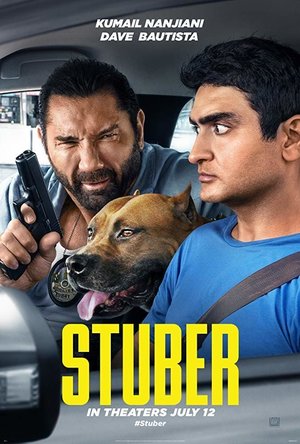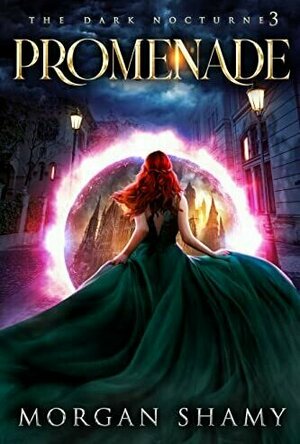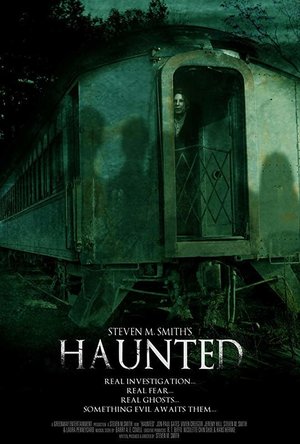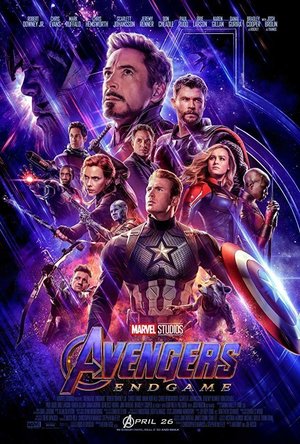Gareth von Kallenbach (980 KP) rated Stuber (2019) in Movies
Jul 8, 2019
Stuber introduces us to Stu (Kumail Nanjiani) a man who is madly in love with his plutonic friend and pushed around daily by his boss at the local big chain sporting goods store. In an effort to help subsidize his friend Becca’s (Betty Gilpin) spin studio he moonlights as an Uber driver. Fate intervenes one day when Detective Vic (Dave Bautista) who has literally just undergone corrective eye surgery receives a tip that the drug lord who had murdered his partner just months before has turned up again in the city. Unable to drive, and recently introduced to Uber by his daughter, Detective Vic is forced to hold hostage Stu as he tracks the killer through the city in an effort to bring him to justice.
Stuber features a star-studded cast that brings this amazingly heartfelt and incredibly funny film to the big screen. With a supporting cast such as Karen Gillan, Mira Sorvino and Natalie Morales to back them up, the audience is taken on a laugh filled, action-packed movie that certainly shows better than the advertisements would lead you to believe. The characters are instantly likable, and no matter how much cursing (of which there is a lot) and violence is portrayed on the screen that never changes. Kumail Nanjiani does an amazing job as the lovable Stu. His comedic timing regularly hits the mark, and his portrayal of a man longing to escape the friend zone never gets old. Bautista delivers what may be one of the most defining roles that he has played. While he regularly is able to stand out among his peers in his previous films, this is one of the first where he is asked to carry the film on his own shoulders…and carry it he does. The partnership and true friendship between the two is believable and continues to strengthen as the film moves on. I might even go as far as to say that the chemistry between these two incredible actors is magical.
That’s not to say that Stuber is a perfect movie, it’s predictable and doesn’t really bring anything new to the table. It does however handle the cop who can’t drive scenario far better than any movie that has come before it (like that horrendous movie Taxi that came out back in 2004). It’s a movie that could have gotten away with a PG-13 rating with a little less language, which ultimately may have helped it do better in the theaters (only time will tell of course). That being said, the language itself never feels as though it was thrown in for shock value, in fact I imagine that any of us who might wind up in this particular predicament might have a few choice words of our own to spout out throughout the entire adventure.
I got far more out of Stuber than I thought possible. For a movie that has had little fanfare and releases not long after the acquisition of Twentieth Century Fox, it’s incredibly fun and full of just as much heart. To say that I had not expected this to be a movie where the audience would clap when it was over would be a tremendous understatement. It’s good to see that movie studios haven’t given up on fun ideas, even ones that don’t seem to be exceptionally revolutionary or over-the-top. This is one of the most surprising movies of the summer, in a summer full of blockbusters and big budget films Stuber quietly succeeds where many others are likely to fail. Stuber is certainly a movie worth the price of admission, and you might even come out a little happier than when you went in.
4 out of 5 stars
http://sknr.net/2019/07/07/stuber/
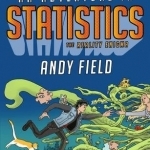
An Adventure in Statistics: The Reality Enigma
Book
Shortlisted for the British Book Design and Production Awards 2016 Shortlisted for the Association...
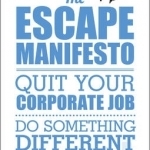
The Escape Manifesto: Quit Your Corporate Job - Do Something Different!
Book
Rob, Dom and Mikey were fed up with the corporate treadmill. When they decided to change careers,...
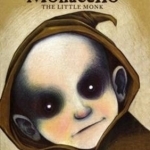
Monacello: The Little Monk: Book 1
Geraldine McCaughrean and Jana Diemberger
Book
A haunting legend from the Undercity of Naples "Goblin" "Gremlin!" "Demon!" Strange little creature....
Heather Cranmer (2721 KP) rated Promenade (The Dark Nocturne #3) in Books
Aug 30, 2022
In Promenade, November and Vincent are in two separate eras in time. After an attack on November's life that lives others she cares about dead, she enlists the help of the Fae to help her get back in time to help stop Vincent's death in the present time. However, there's the shadow wraith that keeps coming after her to send her back to her time. November must convince Vincent, who's a totally different person than his present self, to somehow change the future to prevent his death in her time. However, things don't go as planned. More lives are lost, and November's plan is left in shambles.
I very much loved the plot of Promenade! I was hooked right from the start. Yes, the first two books in the series are fantastic, but Promenade really blew me away! There's so much action and adventure packed in each and every page throughout this book. It's hard not to get sucked right back into November's world. There was a few time where the pacing took off without me, and I was left confused, but that was not very often. Other than those few times, the pacing was perfect, and I found myself fully immersed in the story. I loved the setting of early 20th century London, England. With Shamy's great descriptions of everything that was around, I was easily transported back with November. It was easy to imagine everything going on around November. The world building was so good! The time travel aspect was written superbly, and it was done in a way that wasn't extremely confusing. In Promenade, we still had some mentions of blood walkers, shifters, and witches, but now November was also dealing with the Fae, the Shadow Fae, and a shadow wraith. I loved all the new types of fantasy beings in this book. There were a few plot twist throughout the book, and I loved how the whole trilogy was tied up nicely by the end of the book.
Where do I start with the characters in Promenade? Just like in the previous two books in the trilogy, Shamy does an amazing job at breathing life into each and every one of her characters no matter how big or small of a role they play. November redeemed herself in Promenade after annoying me in Etude. I admired her love and strong bond with Vincent. I loved how she'd risk everything just to try to make sure he and her friends would be alright (even if it would sometimes have the opposite effect). The depth of November's emotions felt very realistic, and I felt myself having the same feelings as November. I enjoyed reading about the Vincent of 1901. He was much different from the present day Vincent, and it was interesting to read how different they were. I liked how we got to know Quincey a little better in this book as well. I enjoyed learning more about him. Cam was also heavily featured, and I was thrilled! I've always had a soft spot for Cam after the first book in the trilogy when he turns over a new leaf. We are also introduced to the characters of Rowan and Hazel. Although they weren't featured a lot, they were still awesome characters. We also get to meet Vincent's father. Let's just say he is definitely a piece of work! Shamy does a fantastic job of making us kind of sympathize with him for wanting to protect his land and people but at the same time, hating him for what he's done to the people he thinks disobey him.
Trigger warnings for Promenade include murder, attempted murder, torture, violence, and blackmail.
Overall, Promenade is one of the best books I've read in awhile. With it's exciting plot and well developed characters, you'd be hard pressed not to like this book. I would definitely recommend Promenade by Morgan Shamy to those aged 14+ who are willing to stay up all night to finish a book due to how great it is!
BackToTheMovies (56 KP) rated Haunted (2013) in Movies
Jun 12, 2019
A TV crew will film a paranormal investigation and obtain evidence that proves we are not alone. Something Evil awaits them! They will all discover the truth, that we are not alone.
The above quote is taken directly from the synopsis on the website, contestants are invited to visit a haunted railway as part of the show of which they are filming, they are all packed into a limousine and taken to the event. The whole scenes within the limo following the group around SHOULD of been filmed by a professional camera and a professional cinematographer but it looks as thou the entire film has been shot on someone's mobile phone.
Budget constraints aside, decent camera's should of been used to document the entire film from introduction to the actual paranormal investigations, rather than Sony handycam's that cost £120. The only time still camera's are used is to document an almost news style report at the start of the film and a few segments in between. Using handycams this instantly brings us into frustrating territory of moving shaky pictures, blurred images, and camera operators with shaky hands. Very poor quality recording even for a documentary style shooting as you're watching a black screen for the duration, has anyone ever heard of night vision? Next the acting, now the contestants themselves are not in on the game, they are not aware of what's going on or what they have signed up too, however Jon our 'medium' gives the game away at every opportunity. The strategically placed actor in the movie is Jon Paul Gates a supposed 'medium' who describes what he is feeling and how strong a presence is in a particular area. I personally would of caught on very easily to this poor display as not only was the acting questionable, but his descriptions of certain ghosts and characters were so detailed that it was obvious they had been memorised from a script or prior knowledge. There is one scene where the ghost is apparently on top of Jon as he is weighed to the ground, I found this scene hysterical, I was literally crying with laughter of how poor he not only acted it out but how a ghost was piggy backing a ride around the railway yard.
For the first 30 minutes of the movie, the group have arrived, walked around some railway tracks and picked up some weird force that only Jon can feel yet no one around the group has even felt or experienced anything out of this world. Now Most Haunted the popular paranormal TV show would of thrust the audience into some action by now but for the opening 30 minutes of Haunted, nothing of the sort has happened, as it stands the documentary as I refuse to call it a film has displayed more history about the railways than anything remotely paranormal. Maybe a title change would be for the best? I am neither scared, nor intrigued at this moment in time, quite frankly I'm hoping this heats up and soon.
I feel as thou if this film was cut shorter, much shorter, with a voice over documentary style about where each group is going and what they are doing it would be much more easier to watch. Cut the best bits in, jump scares, certain happenings, instead of mundane walking around a railway yard, because as it stands I could grab a camera, head off out tonight and shoot an identical piece of footage, its neither scary nor intriguing. It needs to have production value and Haunted is really suffering from a lack of it as a result.
There is one event throughout the whole movie which is the main talking point and then the film has the audacity to kill people off towards the end after a whole run time of nothingness, no build up, no real meaning or reason why. It was basically like watching the worst episode of Most Haunted to find one of your group dead on the floor at the end of it, planned, boring and drawn out far too long.
Shorten the run time, have a voice over, documentary coverage and film, DON'T kill anyone off at the end with some cheesy fake characters who no one now believes and have a genuine vigil, no pranks or set ups and this could of been a cool little paranormal programme.
Sadly none of the above happened. What a shame. A few sequels are in the works, shorten the duration, fix the countless problems and maybe, just maybe show some true paranormal / experiences and I guarantee it will be more of a success !
Lee (2222 KP) rated Ford v Ferrari (aka Le Mans '66) (2019) in Movies
Nov 5, 2019 (Updated Nov 5, 2019)
Le Mans ‘66 (or Ford v Ferrari as it is known elsewhere - much better name, no idea why it needed to be changed) stars Matt Damon and Christian Bale (once again going through some weight loss for a movie role) as Carroll Shelby and his engineering partner Ken Miles. Shelby was the first American to win Le Mans, the 24 hour race held in France, in 1959, but has since retired from racing due to a heart condition. These days, Shelby designs and sells souped-up cars as well as running the racing team Cobra, along with British racing driver Ken Miles. Shelby is calm, very clever and extremely determined and Miles knows everything there is to know about cars, but isn’t exactly what you might call a good ‘people person’. Together they have a wonderful friendship and partnership, the highs and lows of which form the basis and heart of the movie.
Meanwhile, Ford Motor company is suffering from poor sales and Henry Ford II (Tracy Letts) is looking to his workforce to come up with the next big idea in order to try and boost the Ford name. One of the many corporate suits we see during the movie, Lee Iacocca (Jon Bernthal) proposes that Ford buy into Ferrari in order to create a winning sports car that will make Ford cool again with the kids, so they head to Italy for a meeting with Enzo Ferrari. The meeting doesn't really go according to plan though, and the suits return home with their tails between their legs, and a strong desire to go to war with Ferrari and teach them a lesson.
Ford puts its money where its mouth is, pretty much writing a blank cheque for Shelby to come up with a car worthy enough to defeat Ferrari and win Le Mans ‘66, and we then follow Shelby, Miles and their team as they struggle to make it happen. Problems arise when Shelby is repeatedly put under pressure by the corporate suits at Ford to ditch Miles, feeling that he doesn’t quite fit with the Ford image, and this puts strain on both the project and the friendship between Shelby and Miles, eventually resulting in a comedy brawl reminiscent of the one involving Hugh Grant and Colin Firth in Bridget Jones Diary!.
Caitriona Balfe plays Miles' wife, Mollie, and it’s great to finally see her out of period costume and outside of TV show Outlander. It’s a role that could easily have been relegated to the usual, long-suffering spouse, sitting at home watching hubby race with baited breath, and while there is a fair bit of that, she does prove to be a strong and worthy addition to the cast. As does Josh Lucas, one of the dastardly, clueless suits who thinks he knows best. It’s a fantastic, jam-packed cast, but never detracting from the central Shelby/Miles friendship and dynamic.
I’ve come this far without talking about the race itself. There are a number of enjoyable, smaller races throughout the movie, giving us a taste of the high energy, intense camerawork to come, but that’s nothing compared to the 24 hours of racing we get when the team eventually arrive in France. As Shelby and his team look on in the pits, watched over in the stands above by the suits from Ford, and by team Ferrari in the stand next to them, Miles takes it in turns with other drivers to try and win the race, through the night and in heavy rain, dealing with car problems already experienced and worked upon throughout the movie, as well as yet more meddling from those pesky suits.
The pacing of the race is perfect. Putting you right in the heart of the action, occasionally cutting to the drama in the pits and between the team, all the while desperate to get one over on the all powerful Ferrari. This is a movie that can be enjoyed by petrol heads, and non enthusiasts like me, in equal measure, and I had an absolute blast watching it. Highly recommended.

Sony AX53 4K Handycam Camcorder
Tech Watch
The Sony AX53 4K Handycam is a powerful, feature-packed 4K Camcorder with Sony's Exmor R™ CMOS...
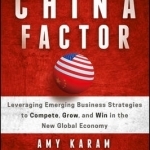
The China Factor: Leveraging Emerging Business Strategies to Compete, Grow, and Win in the New Global Economy
Wiley, Amy Karam and Ken Wilcox
Book
The Innovation of Globalization proven strategies to succeed and out-compete emerging competition...
Movie Metropolis (309 KP) rated Avengers: Endgame (2019) in Movies
Jun 10, 2019
From a technical standpoint, Endgame is like nothing else we’ve ever seen come to the big screen, with a cast that pushes the film to breaking point, characters we remember from movies past and some we had perhaps forgotten about hit the screen in epic fashion. But how good is the finished product?
Adrift in space with no food or water, Tony Stark sends a message to Pepper Potts as his oxygen supply starts to dwindle. Meanwhile, the remaining Avengers – Thor, Black Widow, Captain America and Bruce Banner – must figure out a way to bring back their vanquished allies for an epic showdown with Thanos – the evil demigod who decimated the planet and the universe.
Directors Joe and Anthony Russo, who have by this point, helmed four MCU movies including the brilliant Captain America: Civil War are a safe pair of hands for this incredible feat of film-making, even if the movie feels overstuffed from time to time.
The film starts off exceptionally, with beautiful cinematography lending itself to some intriguing character development. Let’s not forget that we’ve been growing with some of these characters for 10 years and yet Endgame still manages to surprise and delight with new facets of their personalities.
This is helped of course by the tightly written script, but is mainly down to the actors who portray these icons of cinema. Robert Downey Jr is the best he’s been since the solo Iron Man movies and both Chris Evans and Hemsworth are immensely likeable as Captain America and Thor respectively. Unfortunately, Thor’s character arc here is a little disappointing as the Russo’s turn him into the butt of too many jokes – he is the god of thunder after all.
Where the film does suffer is with some of the newer characters. Brie Larson’s irritating Carol Danvers gets far too much screen time for someone so new to the franchise, and this sometimes feels at the expense of better, more established fan favourites. There’s nothing particularly wrong with her Captain Marvel, but she’s wooden and remains unlikeable, as she did in her solo outing earlier this year.
One individual that does standout however is Karen Gillan’s, Nebula. Always a secondary character up to this point, it’s fantastic to see her blossom and fully embody the personality of the troubled cyborg. In fact, she’s probably the best character across the entire running time.
Moments that should have more poignancy don’t get the respect they deserve
Josh Brolin’s Thanos is as intimidating as ever, though perhaps not as much as he was in last year’s Infinity War. And while the script-writing and humour are as spot on as you can imagine for a movie baring the MCU badge of honour, the Russo brothers are forced to re-write some of the franchise’s own rules – for plot reasons of course.
For fans of the entire universe, this proves unnerving but as with any series that’s lasted this long, some artistic license needs to be taken to keep it feeling fresh.
One thing that can’t be criticised however is the pacing. For a film a little over three hours long, Endgame never feels dull. Sure, there are moments that could have been trimmed down, but from thrilling set piece to thrilling set piece, the film steamrolls itself into a final hour that will have your jaw hitting the floor numerous times.
From a special effects standpoint, Endgame deserves praise. It would be easy to criticise the film for overflowing with CGI rather than the practical effects that the Star Wars and Jurassic franchises rely on, but this would be doing a disservice to the wonderful work the effects teams have done on this film. At no point are you under the illusion that this is all real, but it’s the best the MCU has been, especially towards the finale.
Nevertheless, the sheer scope of the film proves to be its undoing at times. Moments that should have more poignancy don’t get the respect they deserve and the number of characters vying for screen time naturally means some sacrifices needed to be made here and there.
Overall, Avengers: Endgame is a fitting tribute to the 21 films that came before it and acts as a cathartic exercise, putting to rest over a decade of thrilling, emotional and exciting movies. It’s action packed to the point of being exhausting and is, if you’ll pardon the pun, a technical marvel, but it just doesn’t quite hit the same heights as Infinity War and dare I say it, Thor: Ragnarok. As I stated at the beginning of this review, it would be easy for me to say Endgame is the best film in the franchise, but that would be doing a disservice to you the readers and the incredible films that truly deserve that title.
https://moviemetropolis.net/2019/04/27/avengers-endgame-review-the-mcu-will-never-be-the-same-again/
